We talk art and horror with the groundbreaking artist Daniella Batsheva, whose work exemplifies the idea of “morbidly beautiful”.
Visual artist Daniella Batsheva is a self-proclaimed “Illustrator with a design habit” whose aesthetic straddles the line between underground and mainstream. Her art boasts the beautiful detail-heavy, intricate linework of the Victorian era mixed with the dark goth imagery inspired by horror films. Softly stylized figures with deep color palettes. Whimsy with a creepy twist.
Having recently discovered this talented creator, I knew I had to know more about her creative process and what makes her brilliant mind tick. Fortunately, she’s also a huge horror nerd and was kind enough to grant Morbidly Beautiful an interview. Getting to know her made me a much bigger fan than I already was.
Daniella even created a Morbidly Beautiful exclusive piece of art for us, which I’m beyond in love with. Check out this stunning work of art below, and then read more about one of my new favorite artists.
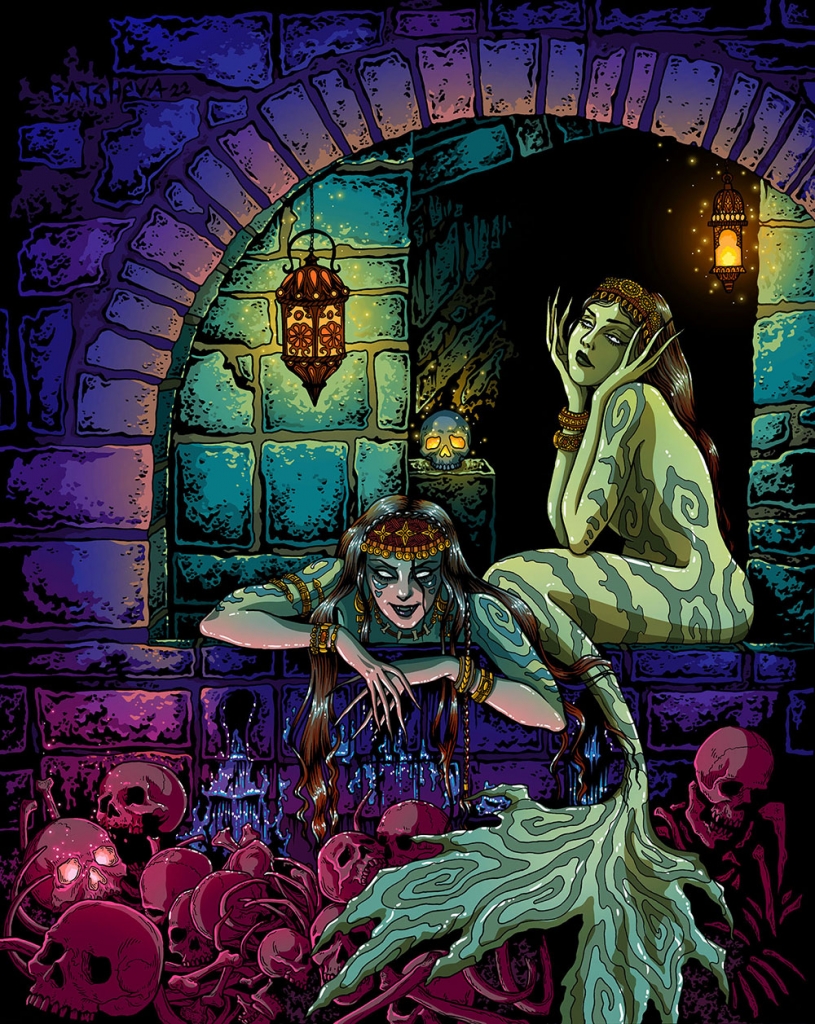
Morbidly Beautiful exclusive art by Daniella Batsheva
1. We have to start by talking about the exclusive design you did for us. It’s stunning! Can you describe your inspiration for the piece? Additionally, you state music is a big inspiration for you and that each of your projects has a soundtrack. What songs would be on the soundtrack for this amazing piece?
Yes!! This is actually an illustration of a real place in my family’s village! My grandmother would come here to collect water for cooking, bathing, etc. Everyone calls it “hamaayan,” which means “the spring.” The place is located in Ein Karem, Israel, and is officially called Mary’s Spring. It’s up the street from where St. John the Baptist was born, and it’s said that the Virgin Mary stopped there to drink. We just used the water for everyday life.
My fantastical child brain always conjured up imagery of this sort whenever I visited the spring in the middle of the night. It would overflow into a spiral maze, and there would be lots of fat toads to play with. These are the friends I had always envisioned being there. Mermaids and creatures, clawing their way through the watery tunnels far up into the mountains.
While drawing this, I listened to Choshech, an Israeli post-punk band, The Brian Jonestown Massacre, and Jean-Michel Jarre. Specifically the Choshech tracks “Degel Shachor” (black flag) and “Haraash” (the noise), Jean-Michel Jarre albums Oxygene and Equinoxe, and The Brian Jonestown Massacre’s Their Satanic Majesties’ Second Request.
2. I love that! How did you first discover your passion for art?
Art, or the urge to draw, has always been with me. When I became self-aware as a toddler, I was already scribbling on every surface I could get my squishy little hands on. At four, I wanted to be a fashion illustrator, but at thirteen, I wanted to do illustration for entertainment. Art has always been more of a compulsion than a choice for me.
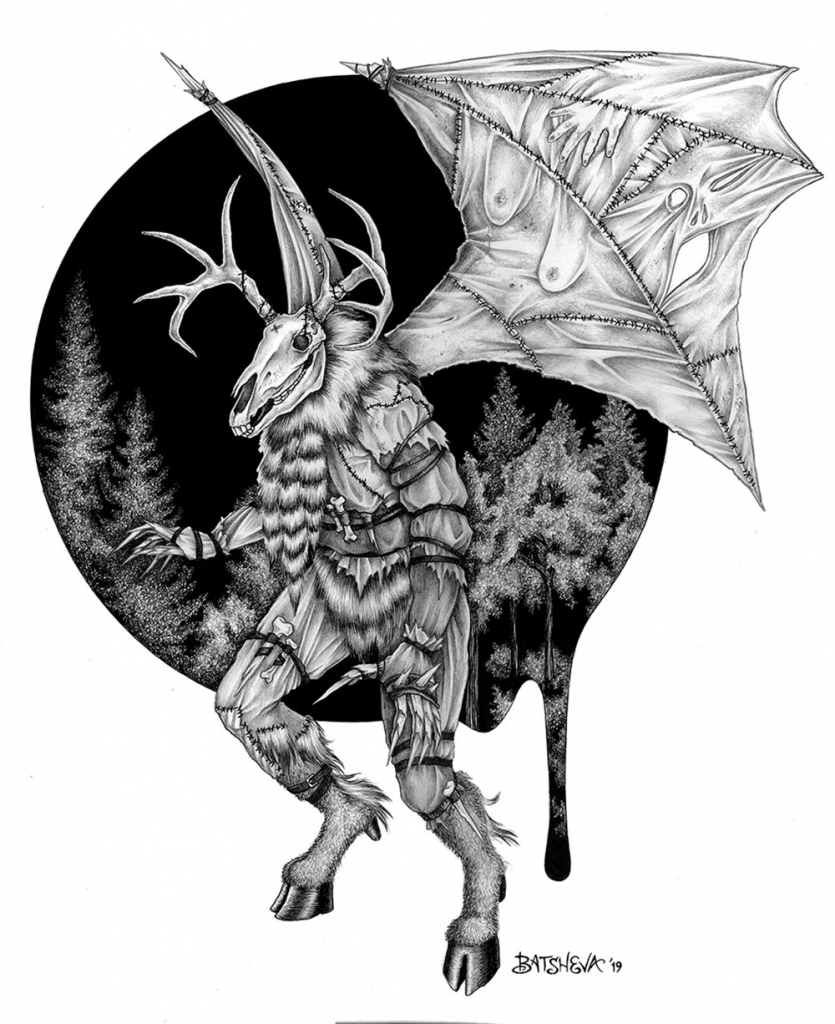
3. How would you describe your brand? What makes you as an artist unique?
Alternative illustration that’s warm, haunting, with inviting color palettes and a dash of naïveté.
My work is sometimes downright gory, but I mostly like to play with a subtle horror that may go unnoticed by some viewers.
Rather than always hitting people over the head with monsters or “gothic” subjects, I like to present those themes in a different, more inviting light. I want my pieces to feel like a haunted house that the viewer would want to curl up in for a nap and a snack break.
4. When and how did you fall in love with horror?
Horror had an impact on me very early on. I had a religious Jewish upbringing, but my Mom, being a fresh immigrant, was not familiar with the “satanic panic” or horror films. If she saw something interesting, she watched it, and so did I! The Christian idea of what was okay and what wasn’t didn’t have a presence in our house.
We had a ritual of watching Tales from the Crypt and drawing, and it was what I looked forward to all week. She explained to me that special effects were an art form and that there were professionals working on set to create fake blood, wounds, and even monsters! I fell in love.
I then understood the appeal of being able to craft a fantastical environment full of creatures that could make viewers feel so deeply. In this case, the feeling was fear!
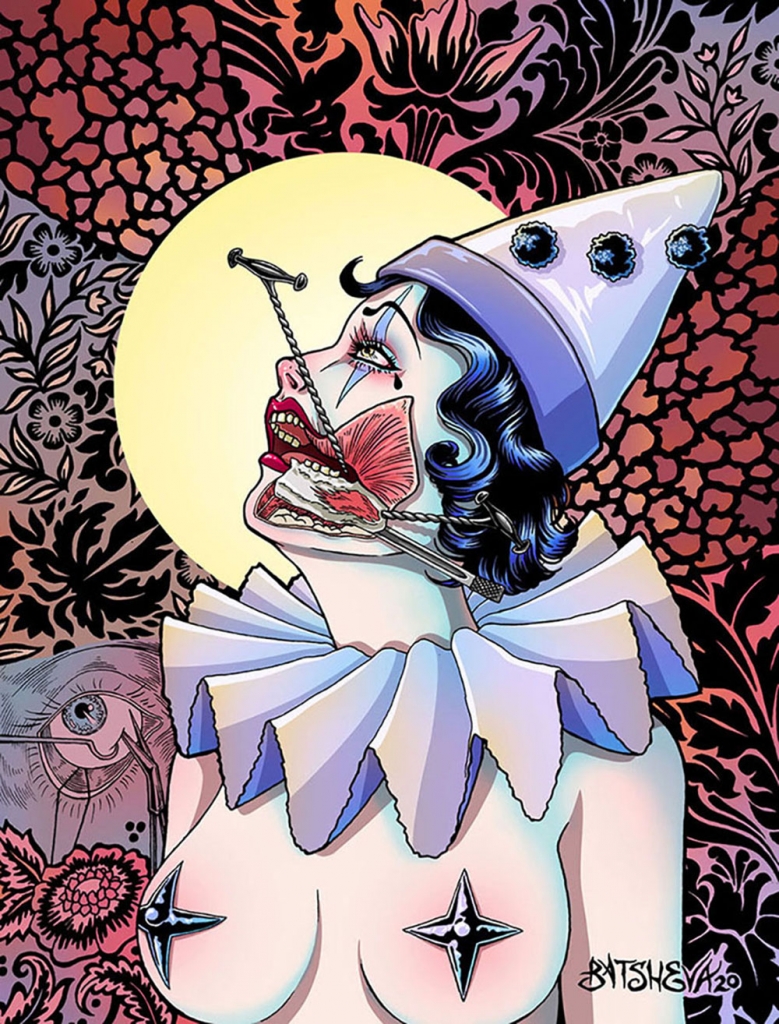
5. What draws you to the genre? What does horror mean to you?
It’s complicated. On one hand, my mother was very open and encouraging about it. On the other hand, as I got older and she came under the influence of other Americans, she started worrying about the satanic panic-type stuff. Not that it meant anything, she knew it was bullshit, but it was more of, “What would the neighbors think?”
Unfortunately for my mother, that attempt to gently steer me away from the visuals and stories that I loved so deeply, was what drew me in further. I have a rebellious streak that I’ve embraced over the years. I’m awful at lying; my expression and body language always deceive me, so I could not hide my love of horror.
To me, horror was honest, edgy, not some sugar-coated fairytale mess you tell your kids. It is an art form that, apparently, deeply bothered almost everyone around me. Horror and all things related were beautiful to me, though, so I embraced them.
6. What does art/design mean to you? Why do you think what you do matters?
Lordy, this is a loaded question! I do appreciate art for art’s sake, but I feel that art and design are at their best when serving a purpose. Historically, religious art served the purpose of worship; even if the painting would just be hung on a wall, it pushed the artist to do their best for that reason.
I think we need to consider how we integrate art into our daily lives because I’m afraid that most people forget its value. Art is what we use to define where we stand as a species. If you research any period, the paintings, pottery, and clothing are what’s used to give an idea of what life was like.
Knowing that I would love to make others aware of just how big a part art plays in everyday life.
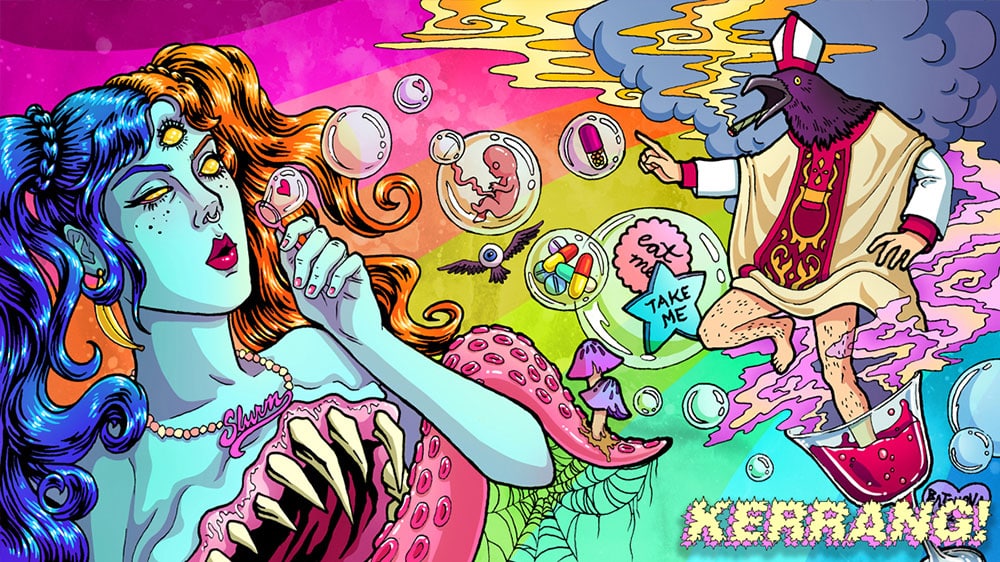
Do you know that cookie tin that every grandma has used as her sewing kit since the ’70s? Even that cookie tin is art! Its imagery has become iconic. And it’s so cute that every grandma wanted to keep it to use in her everyday life. The piece doesn’t have to make a massive statement, but I think we’re in a time where we should be making an effort to create beautiful objects and products that are reusable.
I like illustration and design because my creations then serve a purpose. My posters are kept by everyone I’ve illustrated for because it means something to them. My t-shirt graphics become beloved staples in a person’s wardrobe, even if it’s to be worn to sleep. I aim to create pieces and products that could be cherished and used to make someone’s personal space feel a little bit nicer.
7. What is your favorite piece you have created, how did it come about, and why do you love it so much?
I don’t have a favorite at the moment. It’s always on rotation because it depends on my mood.
Most pleasing to the eye, for me, is “Goodnight” with the flapper girl leaning in to kiss the skeleton moon. She’s not even a new one, but I love the simplicity of it, one pop of color, clean lines, done. That’s enough to make my mind’s eye happy. I literally drew her in one sitting at a coffee shop in Chinatown in Los Angeles. I let my hands do their thing, and she just kind of happened in a few hours. She was for me, not for anyone else.
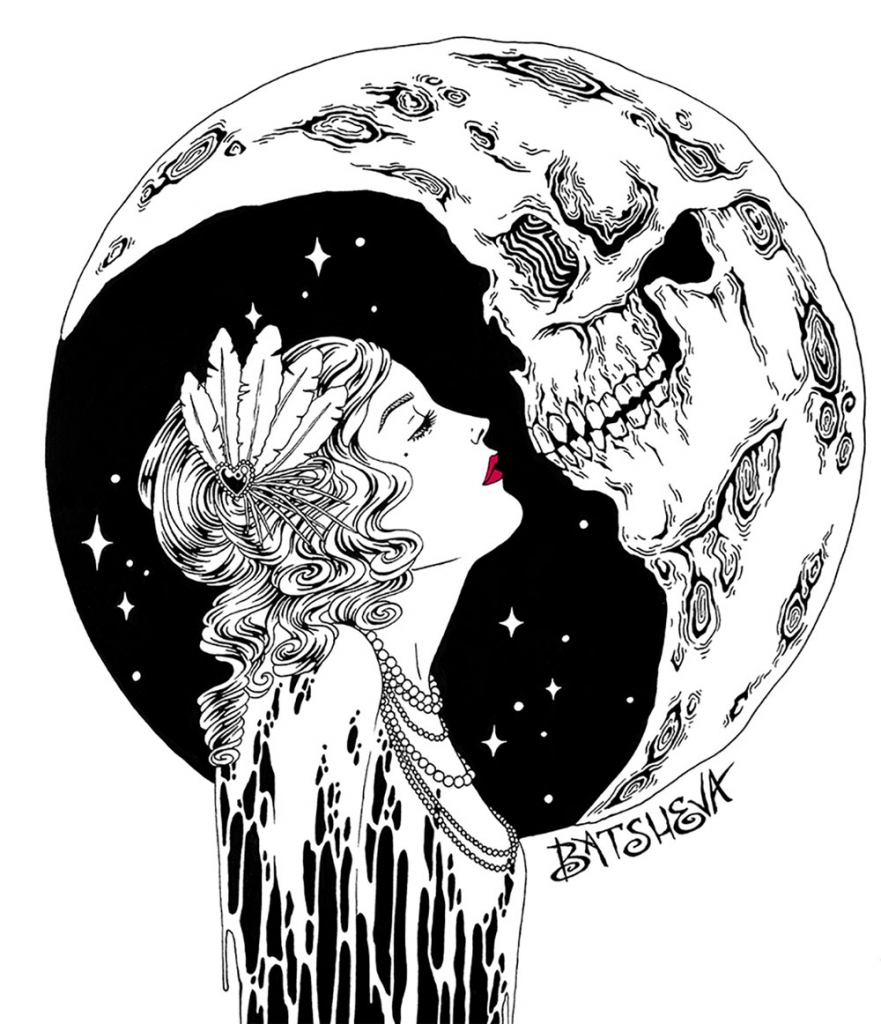
“Goodnight” by Daniella Batsheva
8. I know music is very important you. If you could collaborate with one musical artist, who would it be and why?
Brody Dalle. She’s got a variety of musical works that all have an edgy quality or understated darkness. No matter the project, Brody always has great artwork for her albums, so I’d love to contribute to that. She was one of my childhood heroes! She was so sweet when I met her in a gelato shop in the Studio City area of Los Angeles. Her kids watched me draw for a bit.
9. And, because you are such a big horror fan, I also have to ask: If you could collaborate with one horror filmmaker, who would it be and why?
Oof! ONE? One. Have to sit here for a moment and think. Okay, I think I’ll go with Charles Band. Yes, that’s a bit unexpected, considering Full Moon Features isn’t the most massive production company on earth, but I really love horror that has a sense of humor about itself. Charles Band has an aesthetic that I’m drawn to because, like myself, I do find an element of naïveté to it.
There’s a lot of love that goes into those films, even if some have got the budget equivalent of a cheese sandwich. The days may be long past, but I would’ve loved to do some designs for killer dolls to be used in film. Maybe someday in the future!
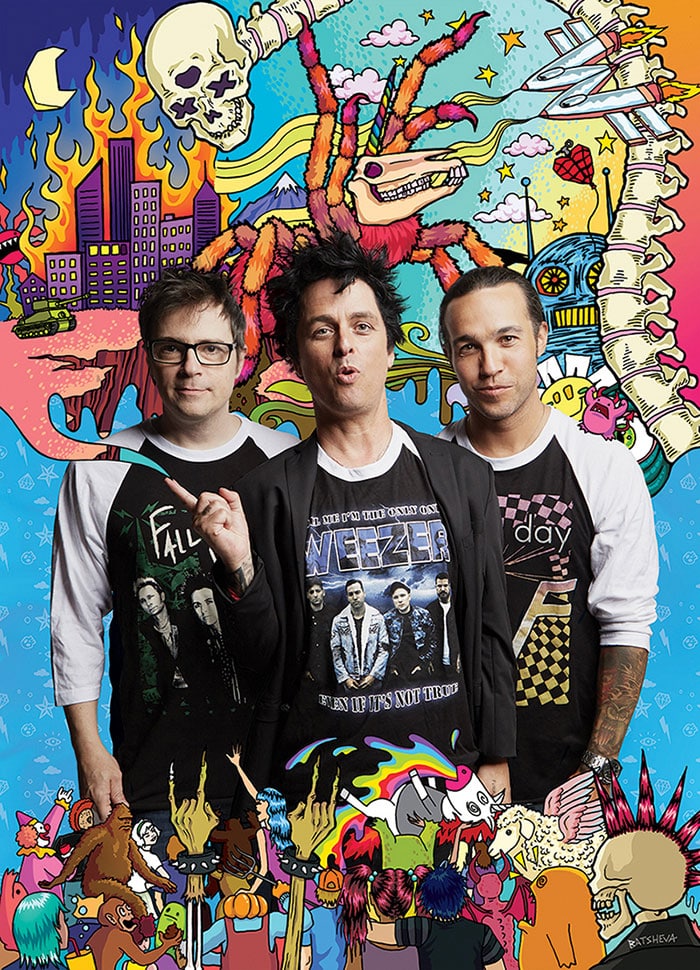
10. You are Kerrang!’s first female Lead Illustrator, helping bring inclusivity to the brand. How does it feel to be a ground and ceiling breaker in this way, and — as an influential woman in horror — what does inclusivity mean to you?
I have to give credit where credit is due and say that this expansion at Kerrang! is largely due to Brand Manager, Esme Surfleet. She trusted me with taking care of the visuals to help the team bring about a new era of inclusivity, and it’s been an honor working with them.
I take what I do very seriously, even if some of the subject matter in my illustrations can be goofy. Being trusted with something that carries so much meaning is very humbling, and the artwork is less about me and my wants and more about the messages it carries to others.
I think about who I’m representing, what needs to be said, and if it’s a topic that can make people a bit shy, like with my BDSM piece (shown below), I try to make it a bit lighthearted.
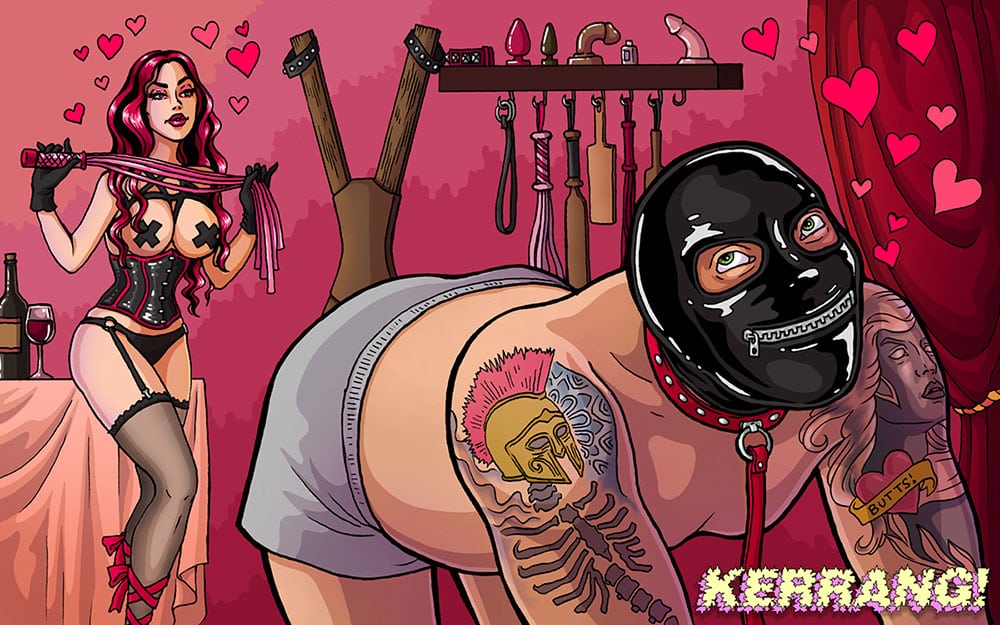
This relates closely to my own struggle, being Middle-Eastern-Jewish and growing up in the punk scene. I always hid my cultural background because I didn’t know if I could be comfortably open about it. At the time, there was no one else like me even in mainstream media, so how on earth would I even begin to discuss this as someone in an alternative community?
I still haven’t found a representation of my cultural background in the punk, goth, or horror community.
In recent years, I’ve been seeing a lot more Jewish people bringing their stories and experiences into horror, but it’s mostly from a European perspective. I hope to start opening a dialogue about what it means to be a Yemeni Jew in this context. What does it look like? What does it sound like?
While I work through all these ideas and subjects with Kerrang!, I’m hoping I learn a bit more about myself and how to consolidate my cultural background with my eclectic interests.
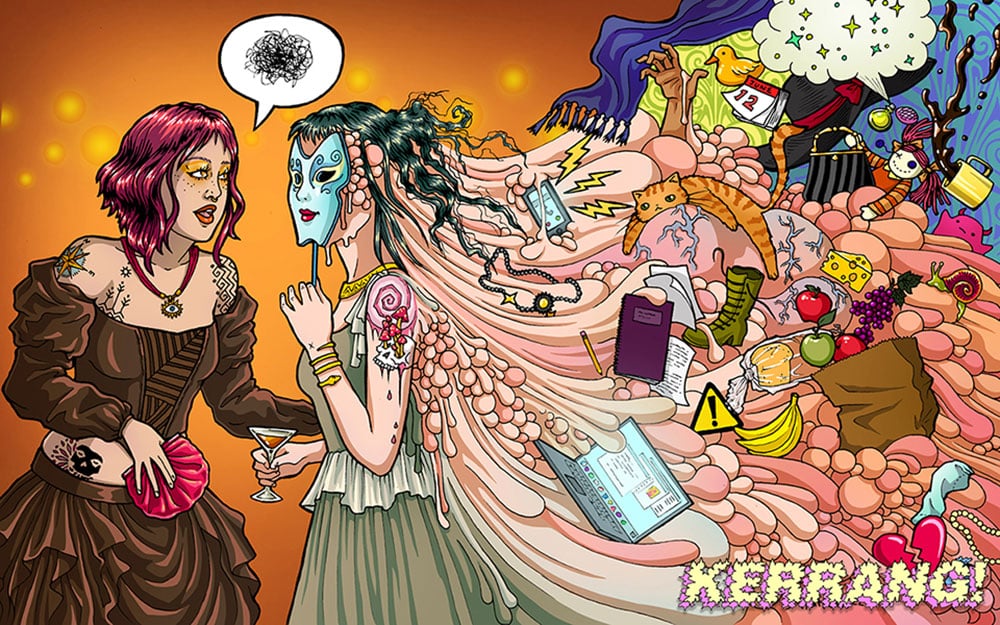
11. Did your relationship to art and creating change or evolve at all during the pandemic?
Yes. I think I started honoring it more. Before the pandemic, everything felt streamlined, like I was just making art because I was told to and because it made me money. When the pandemic happened, I started thinking about what my work really means and how it can contribute to something good, because I actually had the precious time to sit with it and reflect.
In December of 2020, I worked with the band The Kut and their singer, Princess Maha, on the album artwork for Waiting for Christmas. Portions of the sales went to the Red Cross Coronavirus relief fund in the UK, which raised thousands of pounds to help those who had been affected.
I realized the power that art has. During that time, it seems like everyone turned to art as an escape, whether it was music, books, or movies.
The pandemic allowed me to see how my work could have a positive impact.
12. Do you have any exciting projects you’re working on that you can talk about? What’s next for you?
Right now, I’m working on a few different pitch decks that may only see the light of day if the projects are greenlit. I will continue prioritizing illustrations for Kerrang! as well as Trashville, a fresh Entertainment and Arts brand in London. I’ve got some private commissions as well.
As for the future, I plan on creating a series of pieces that will explore Yemeni Jewishness in a darker, gothic context. I aim to communicate my stories and experiences so that there can be some representation for others like me in the alternative. There isn’t a set date for a show or anything, though I’ve been discussing a space in London for the future. I’d have to take the time to work on this outside of my illustration and design projects.
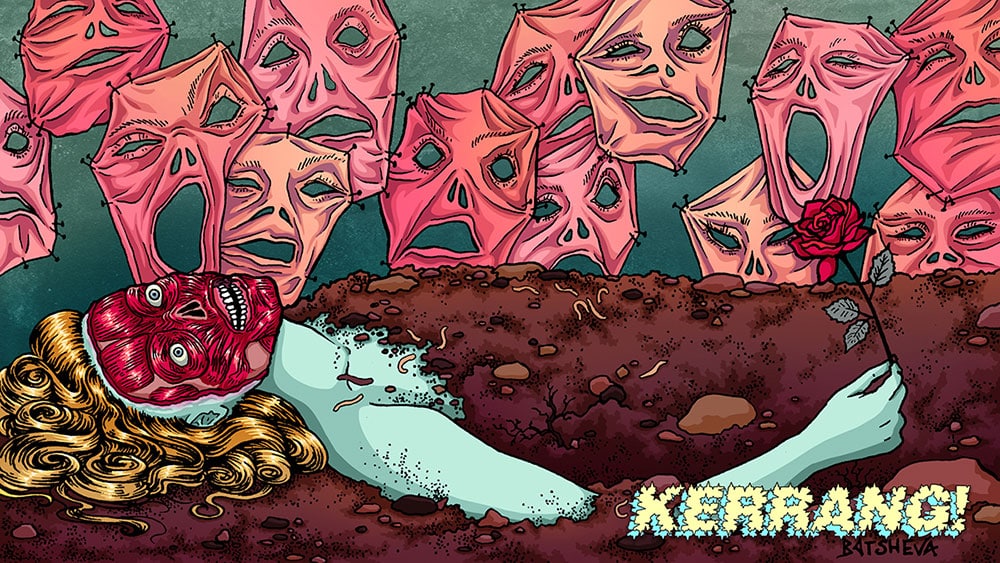
13. What’s your favorite horror film of all time and the past 20 years?
I actually don’t have a favorite from the past 20 years. I mean, they’re fine. I enjoyed the visuals in The Neon Demon and Mandy. Agh…how embarrassing; I feel like such a hipster.
Do you know what it is? I think that when a film becomes too polished, it loses me a bit. It starts to feel like a Hollywood blockbuster, and I don’t like it. There’s so much CG and editing happening in post that I don’t get the sense of it being made by human hands. It’s too perfect. It’s like buying a mass-produced Barbie vs. buying a hand-carved puppet from an artist.
As for a favorite, I default to Dolls. I think Dolls best encompasses all the qualities that I really love in a horror film. It’s hand-crafted, doesn’t take itself too seriously, has interesting characters, a beautiful environment, fun kills, a nice score, and great little monsters.
I also have to say, while not in the horror genre, I’m a massive fan of the works of Georges Melies. Aesthetically, those are the most pleasing films ever to me, and they’re so old I don’t even think they have a genre.
What an absolute pleasure this has been! Is there anything else you’d like to add?
Whenever an illustration is published, I always share it on my socials and website. So, if you’d like to keep up to date, you can find me on Instagram (@daniellabatsheva), Facebook (facebook.com/daniella.batsheva), and Twitter (@danibatsheva). And you can check out my portfolio on my website at daniellabatsheva.com.
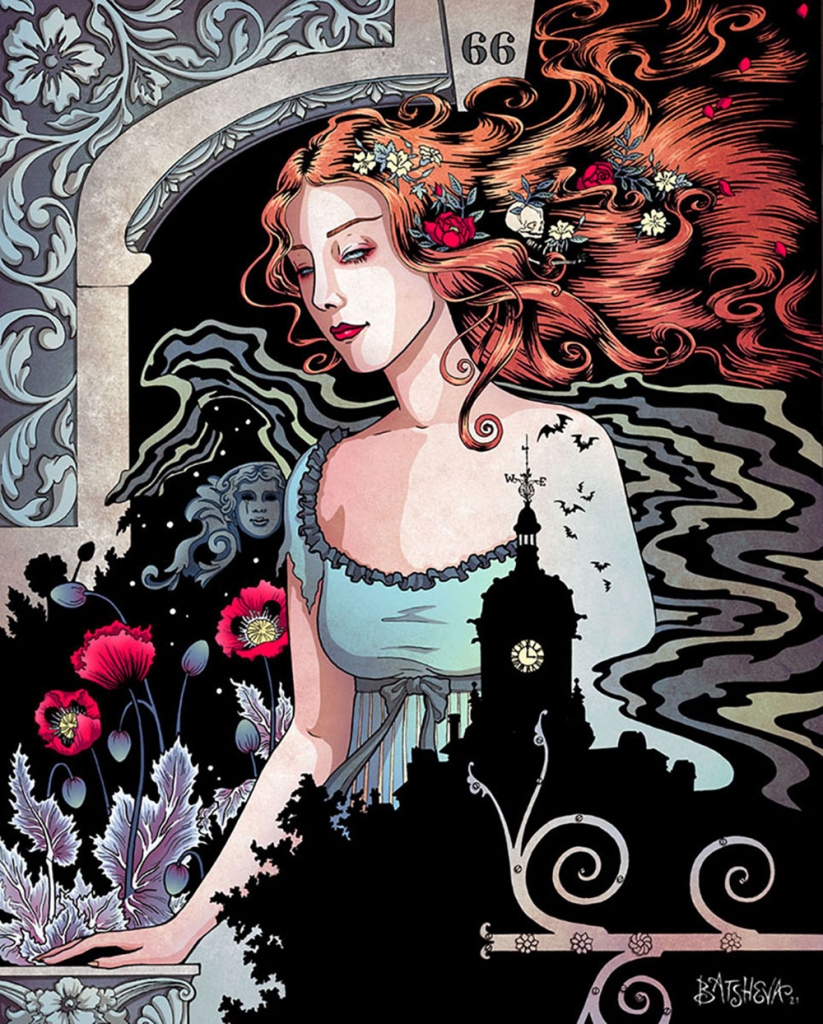
ABOUT DANIELLA
Her art is rooted in the 19th century but with a focus on modernity. She counts among her influences French art nouveau poster illustrator Louis Theophile Hingre, Irish stained glass artist and book illustrator Harry Clarke, French portrait painter Élisabeth Louise Vigée Le Brun, Victorian era watercolorist Eleanor Vere Boyle, English illustrator Aubrey Beardley, and Austrian painter Gustav Klimt, along with more contemporary artists such as Italian cartoonist Nadir Quinto, Japanese horror manga Junji Ito and American painter Camille Rose Garcia.
Horror movie mastermind Clive Barker, English occultist painter Austin Osman Spare, Japanese cartoonist Peach Momoko and American horror film visionary Charles Band are also artistic inspirations.
She has designed product packaging for Pizza Girl sauce, trophy design for the horror film festival Shriekfest, book covers, advertisements, and more. She loves collaborating with musicians, and has done many music projects. She is also the first-ever female Lead Illustrator for storied UK alternative culture brand Kerrang! – helping to usher in a new era of inclusivity through her artworks.


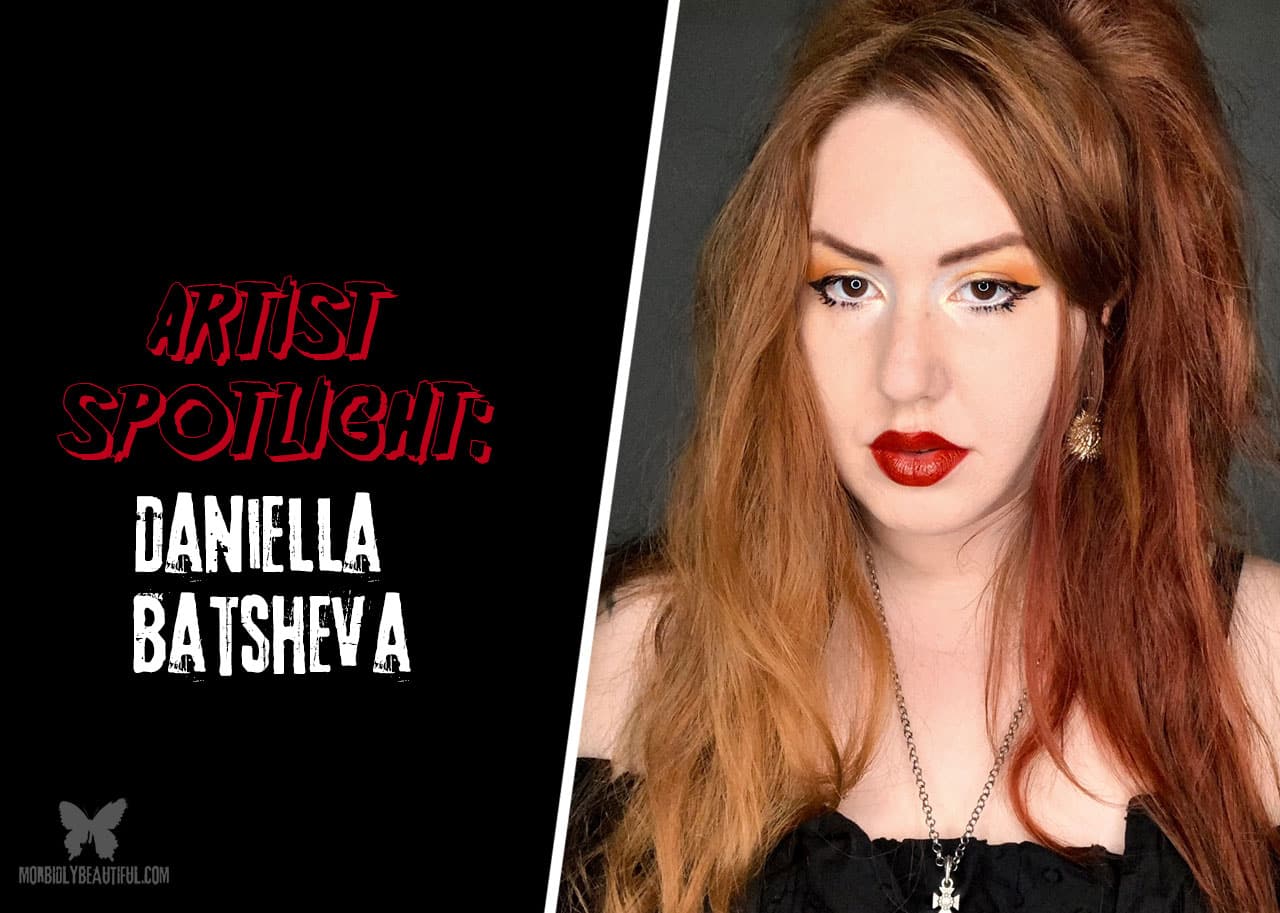
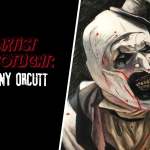
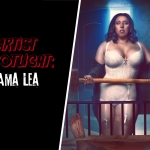
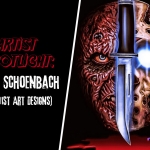
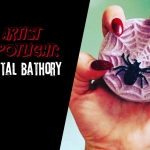








Follow Us!